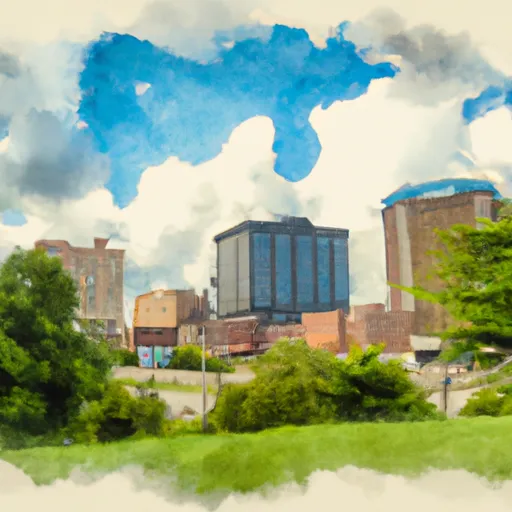-
 Snoflo Premium
Snoflo Premium
Get unlimited access to all our content
With no Ad interruptions! - Start Your Free Trial Login with existing account
Terrace-Park
Eden Index
Climate
8.3
•
Recreation
2.8
•
Community
5.8
•
Safeguard
5.7/10

Terrace Park is a charming village located in Hamilton County, Ohio, known for its diverse outdoor recreation opportunities, pleasant climate, and stunning natural beauty. The village experiences a humid subtropical climate, with warm summers and mild winters. Summers are typically sunny and temperate, with average temperatures ranging from 70-85°F, while winters are cool, with temperatures averaging between 20-40°F.
The village is situated along the Little Miami River, which not only adds to its scenic appeal but also offers various hydrology constituents. The river provides opportunities for activities like kayaking, canoeing, and fishing, attracting outdoor enthusiasts throughout the year. Additionally, Terrace Park boasts several parks and green spaces, such as Veterans Memorial Park and the Terrace Park Swim Club, offering residents and visitors ample space for picnicking, hiking, and sports.
The village's proximity to the Little Miami Scenic Trail, a popular bike path that spans over 70 miles, further enhances the outdoor recreation opportunities in Terrace Park. This trail allows cyclists, walkers, and runners to explore the region's breathtaking landscapes and enjoy the tranquility of nature.
In summary, Terrace Park, Ohio, offers a favorable climate, hydrology constituents through the Little Miami River, and numerous outdoor recreation opportunities, making it an ideal destination for nature lovers and adventure enthusiasts.
What is the Eden Index?
The Snoflo Eden Index serves as a comprehensive rating system for regions, evaluating their desirability through a holistic assessment of climate health, outdoor recreation opportunities, and natural disaster risk, acknowledging the profound impact of these factors on livability and well-being.
Climate Health Indicator (CHI): 8.3
Terrace-Park receives approximately
1137mm of rain per year,
with humidity levels near 81%
and air temperatures averaging around
12°C.
Terrace-Park has a plant hardyness factor of
6, meaning
plants and agriculture in this region thrive during a short period during spring and early summer. Most
plants will die off during the colder winter months.
By considering the ideal temperature range, reliable water supplies, clean air, and stable seasonal rain or snowpacks, the Climate Health Indicator (CHI) underscores the significance of a healthy climate as the foundation for quality living.
A healthy climate is paramount for ensuring a high quality of life and livability in a region, fostering both physical well-being and environmental harmony. This can be characterized by ideal temperatures, reliable access to water supplies, clean air, and consistent seasonal rain or snowpacks.
Weather Forecast
Streamflow Conditions
Middle Ohio-Little Miami
Area Rivers
Middle Ohio-Little Miami
Snowpack Depths
Middle Ohio-Little Miami
Reservoir Storage Capacity
Middle Ohio-Little Miami
Groundwater Levels
Recreational Opportunity Index (ROI): 2.8
The Recreational Opportunity Index (ROI) recognizes the value of outdoor recreational options, such as parks, hiking trails, camping sites, and fishing spots, while acknowledging that climate plays a pivotal role in ensuring the comfort and consistency of these experiences.
Access to outdoor recreational opportunities, encompassing activities such as parks, hiking, camping, and fishing, is crucial for overall well-being, and the climate plays a pivotal role in enabling and enhancing these experiences, ensuring that individuals can engage in nature-based activities comfortably and consistently.
Camping Areas
| Campground | Campsites | Reservations | Toilets | Showers | Elevation |
|---|---|---|---|---|---|
| Bee Rock Rec Area | 35 | 911 ft | |||
| Wood Creek Lake Ramp - DFWR | None | 1,032 ft | |||
| Holly Bay Rec Area | 130 | 1,105 ft | |||
| Kentucky Horse Park Campground | 270 | 880 ft | |||
| Renfro Valley Boat Dock | 72 | 928 ft | |||
| Fort Boonesborough State Park | 165 | 621 ft |
Catastrophe Safeguard Index (CSI):
The Catastrophe Safeguard Index (CSI) recognizes that natural disaster risk, encompassing floods, fires, hurricanes, and tornadoes, can drastically affect safety and the overall appeal of an area.
The level of natural disaster risk in a region significantly affects safety and the overall livability, with climate change amplifying these risks by potentially increasing the frequency and intensity of events like floods, fires, hurricanes, and tornadoes, thereby posing substantial challenges to community resilience and well-being.
Community Resilience Indicator (CRI): 5.8
The Community Resilience Indicator (CRI) recognizes that education, healthcare, and socioeconomics are crucial to the well-being of a region. The CRI acknowledges the profound impact of these elements on residents' overall quality of life. By evaluating educational resources, healthcare accessibility, and economic inclusivity, the index captures the essential aspects that contribute to a thriving community, fostering resident satisfaction, equity, and social cohesion.

